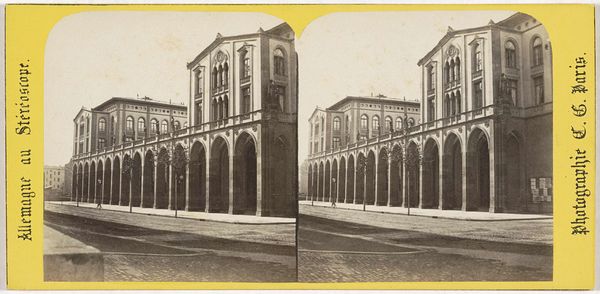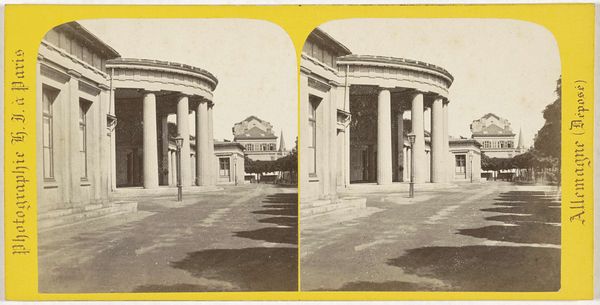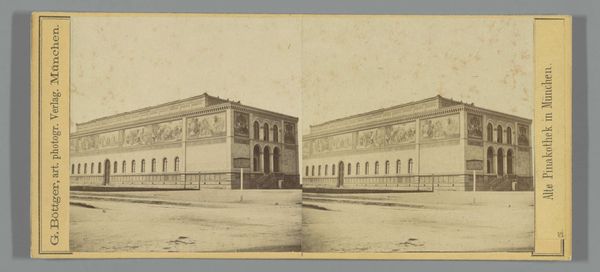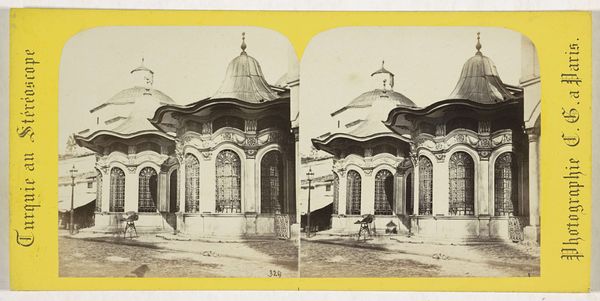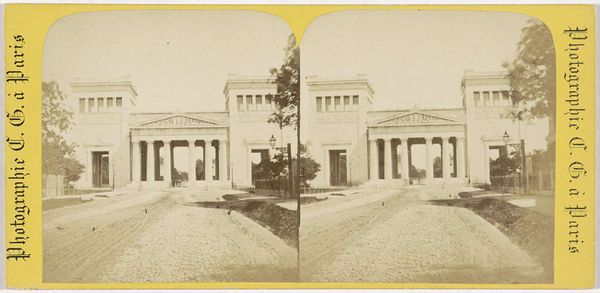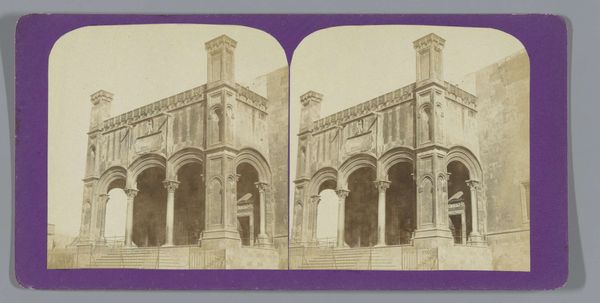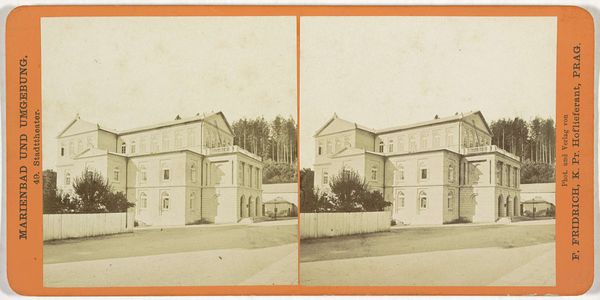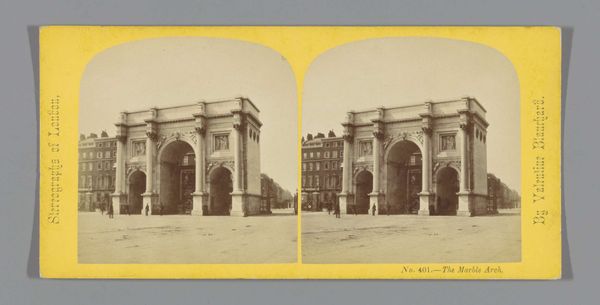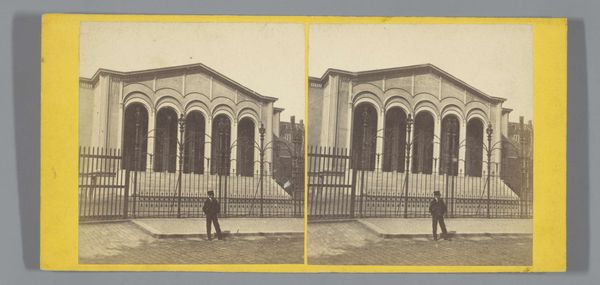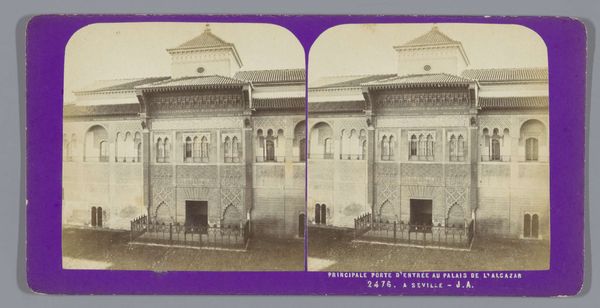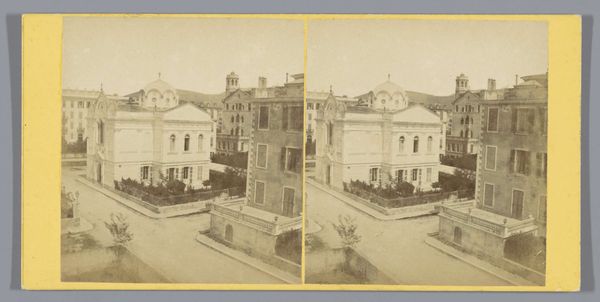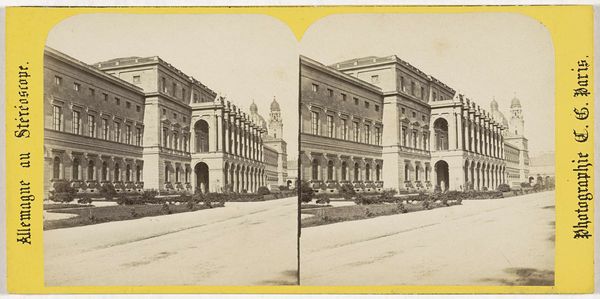
print, daguerreotype, photography, architecture
# print
#
daguerreotype
#
photography
#
cityscape
#
architecture
Dimensions: height 84 mm, width 175 mm
Copyright: Rijks Museum: Open Domain
Editor: This daguerreotype, a photograph by Charles Gaudin from 1868, showcases the Sint-Bonifatiusabdij in Munich. It's interesting how photography at this point renders such detailed architectural elements. What catches your eye about this piece? Curator: Well, immediately, I’m drawn to the materiality. Look at the photographic process itself. How did the labour of creating a reproducible image impact architectural representation in the 19th century? Editor: That's a different perspective than I expected! I was just thinking about the building's design. Curator: The architecture matters, certainly, but consider the materials. The photographic chemicals, the paper, the labor in developing and printing, the consumption of images by a growing middle class - this speaks volumes. And then we might ask ourselves about the socio-economic drivers behind the creation of architectural imagery meant to capture buildings as commodities. Editor: So, it's less about the building and more about... photography itself? Curator: Not necessarily, but consider the relationship between the two. Photography's reproducibility changes the status of architecture. It makes these places more accessible to wider audiences and shapes our consumption habits as much as our architectural preferences. How many of these were produced? Who bought them? What narratives were they propagating? Editor: I hadn't really considered that aspect before. That this image, more than just a picture of a building, could also be an artifact tied to a specific labor and production process. Curator: Exactly! Recognizing those conditions is often more revealing than judging whether it resembles a picture of 'perfect' building or not. Editor: That's given me a lot to think about. Thanks!
Comments
No comments
Be the first to comment and join the conversation on the ultimate creative platform.
